After leaving the Keshava Temple, we drove back into town and found Pattabhi Jois’ Ashtanga Yoga School not too far from the Mysore Palace. In fact, it was almost in the center of Mysore.
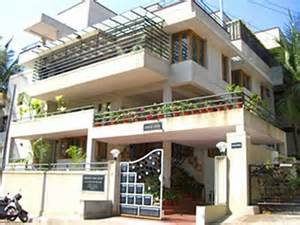
It is like most authentic Yoga facilities, a rather unassuming building. I had not planned time to practice this trip, but I did want to visit the site and experience the energy. Along the way in my own yoga journey I have had the opportunity to practice and learn from many people, but my foundational training was guided by Richard Freeman from Boulder Colorado. Richard spoke often and lovingly of his master Pattabhi Jois. I thought you might enjoy a short background of Ashtanga yoga and a little more insight into the life of Pattabhi Jois. The first picture is inside the studio, Richard Freeman is featured in the first three pictures.
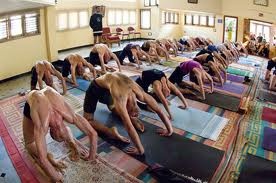
Ashtanga Yoga is an ancient system of Yoga which includes strength building asana taught in a Vinyasa style. Asanas purify, strengthen and give flexibility to the body. Breathing is inhale and exhale. Both the inhale and exhale should be steady and even, the length of the inhale should be the same length as the exhale. Breathing in this manner purifies the nervous system.
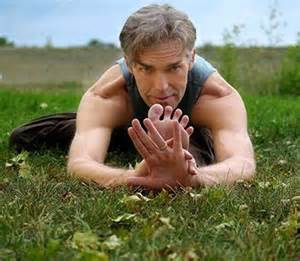
Dristhi is the place where you look while in the asana. Dristhi purifies and stabilizes the functioning of the mind. Vinyasa means breathing and movement system. For each movement, there is one breath. The purpose of vinyasa is for internal cleansing. Breathing and moving together while performing asanas makes the blood hot, or as Pattabhi Jois says, boils the blood. Thick blood is dirty and causes disease in the body. The heat created from yoga cleans the blood and makes it thin, so that it may circulate freely.
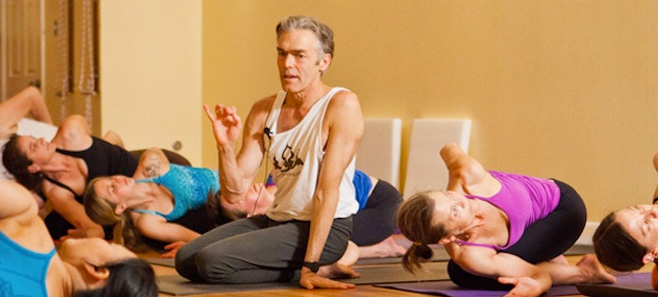
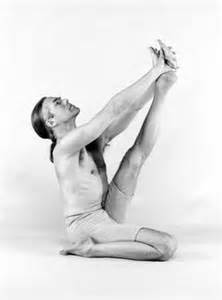
An important component of the breathing system is mula and uddiyana bandha. These are the anal and lower abdominal locks which seal in energy, give lightness, strength and health to the body, and help to build a strong internal fire. Without bandhas, breathing will not be correct, and the asanas will give no benefit. When mula bandha is perfect, mind control is automatic.
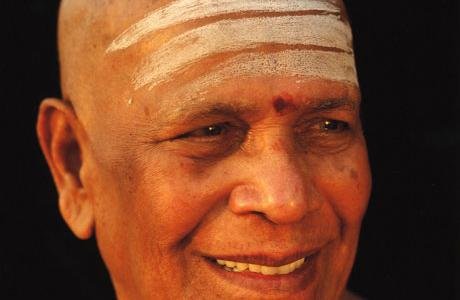
Pattabhi Jois was born in 1915 in Kowshika, in the district of Hassan, in Karnataka State, South India. His father was an astrologer, priest, and landholder. His mother took care of the house and the nine children, of whom Jois was the fifth. He began lessons in Sanskrit and rituals from his father, as were all Brahmin (an individual belonging to the Hindu priest, artists, teachers, and technician’s class) boys, at the age of five. In those days in India, yoga was considered an esoteric practice suitable for monks, sadhus, and sannyasis (devotees of the god Shiva), but not for the householder. In 1927, during a demonstration of Yoga at his middle school, he met Krishnamacharya.
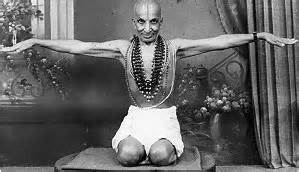
Pattabhi, 12 years old at the time, was enthralled by the asanas, and the strength and grace this yogi demonstrated by jumping from pose to pose. The very next day, he visited the home where Krishnamacharya was staying and requested to speak with him. After numerous questions about his family, he was accepted as a student and went on to study with Krishnamacharya for twenty five years.
For two years he remained in Kowshika and practiced with Krishnamacharya every day. His parents did not know he was studying yoga. Without their knowledge, he practice before school every day walking five kilometers to Krishnamacharya home and then on to school. After studying with Krishnamacharya for two years, Pattabhi Jois ran away from home to study at the maharaja’s Sanskrit College. He was poor and had to beg for food, but stayed true to his passion for yoga. In fact for three years he did not write his father to tell him where he was. He studied the Vedas and Sanskrit. In 1931, attending another demonstration at the Sanskrit college, he discovered it was his own guru, Krishnamacharya that was giving the demo.
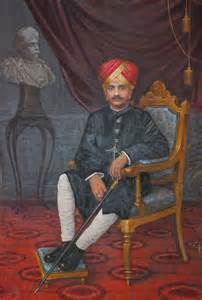
Also attending this demonstration was a minister from the Maharaja of Mysore’s palace. The maharaja, Krishna Rajendra Wodeyar (in picture), who loved yoga and spirituality, was ill. Krishnamacharya, with his vast knowledge and healing abilities, was able to cure the maharaja where others had failed. It was this maharaja who established a yoga shala for him on the palace grounds. This is what brought Krishnamacharya to remain in Mysore for the next twenty years.
It was the support of Krishna Rajendra Wodeyar that sent Krishnamacharya, Jois and other students all over India to perform demonstrations, study texts and research yoga schools and styles. Jois and a fellow student, Mahadev Bhatt, would on occasion be summoned to the palace where they would perform asana demonstrations. Afterward the maharaja himself would do some asana and then send them home with 35-50 rupees, which in those days was quite a large amount of money. It was this maharaja that asked Jois to teach at the Sanskrit College, where he earned a professorship in Advaita Vedanta. He taught there until 1973 when he left to open his Yoga shala.
The text called the Yoga Korunta, an ancient manuscript on Ashtanga yoga, was the basis of the lessons Krishnamacharya taught to Jois. This text is attributed to the sage Vamana; it was one of the many texts taught orally to Krishnamacharya. He learned this text by heart during the seven and a half years he spent living with his teacher Rama Mohan Brahmachari. “Korunta” means groups, as in groups of asana. Thus we get the “series” of asana found in the current Ashtanga yoga practice.
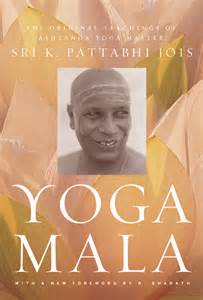
Pattabhi Jois began writing the book “Yoga Malas” in 1958. It was published in India in 1962 by one of his students. Mala is a Sanskrit term that means garland. In India there are many different kinds of malas. There are japamalas, which we are all familiar with, the sacred beads strung on a thread which are used in prayer for counting and keeping focused on the repetition of a mantra. There are also pushpamalas, which are garlands of vivid flowers, smelling of jasmine and other scents that are strong in the form of wreaths and offered in worship to deities in homes and temples. Eddie Stern, the man who wrote the Foreward for this book describes the Yoga Mala so exquisitely. He writes: Jois here offers another kind of mala, which is ancient in tradition, as sacred as a prayer, and as beautiful as flowers. His mala is a garalnd of yoga, in which each vinyasa is like a sacred bead to be counted and focused on, and each asana is like a fragrant flower strung on the thread of the breath.
As we left Mysore for our drive back to Bangalore, I was full. My head was full and my heart was full. I would have dozed off if it had not been for the “speedbumps”. Narender noticing that I was fading suggusted one more stop. Yes, it was Indias version of Starbucks!
![]()
Having heard of the great success of Starbucks, a southern coffee plantation owner had decided to try his luck at the coffee house. I am so glad he did. A tall cappuccino was just the ticket.
